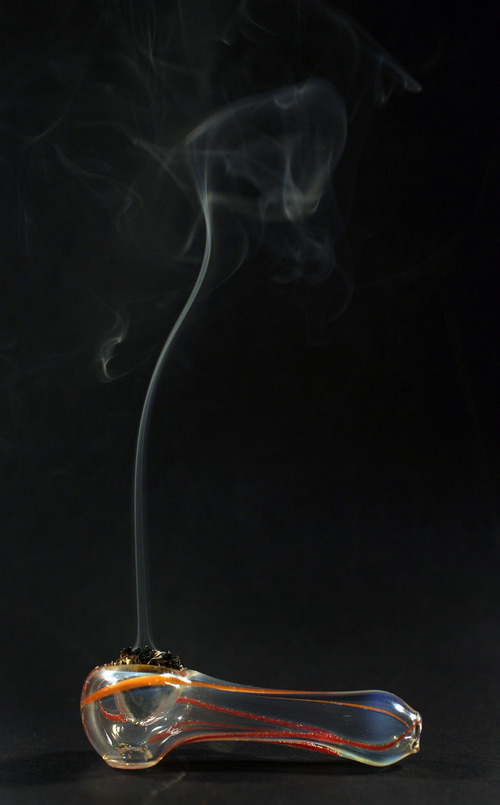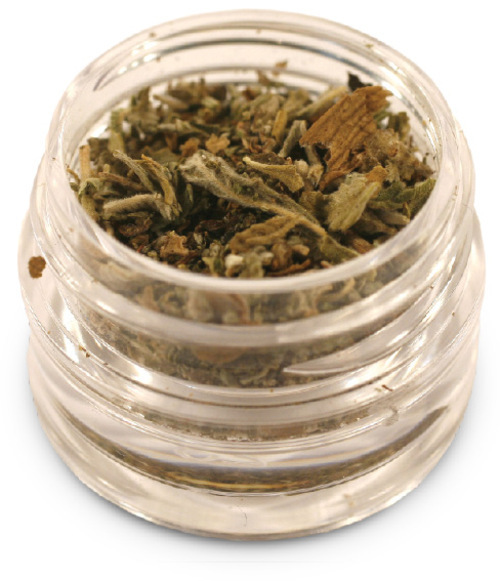This is an archived article that was published on sltrib.com in 2011, and information in the article may be outdated. It is provided only for personal research purposes and may not be reprinted.
The herbal concoction called spice is still available to Utahns despite a federal move to control the products that are sold as incense but smoked like marijuana.
Complicating the U.S. Drug Enforcement Administration's effort to regulate chemicals used to make "fake pot" is a legal challenge by four Minnesota business owners.
The group filed a lawsuit in Minnesota U.S. District Court over the federal move in late December, just before the agency could complete the process. In court documents filed Thursday, DEA lawyers announced that the agency will delay the scheduling of synthetic cannabinoids until Feb. 1 at the earliest.
The business owners claim controlling spice's chemicals would devastate their bottom lines.
"If my business were to suffer an immediate 40 percent loss in sales, it could not survive," wrote Tom Tepley in an affidavit to the court about his chain of Minnesota novelty stores.
Tepley, president of Disc and Tape Inc., also wrote that spice had accounted for more than $1 million in sales in the past year.
Government attorneys argued the businesses "jumped the gun" in filing their lawsuit seeking to halt the change.
"In their rush to the courthouse, plaintiffs have failed to wait for any final agency action," the DEA wrote.
In late November, the agency said it would use an emergency scheduling authority to begin the process of temporarily controlling five chemicals commonly used in spice.
The federal action could have become effective on Dec. 24 or thereafter, putting the chemicals on a federal schedule of controlled items such as cocaine and heroin. But the Minnesota businesses argued in court filings that the DEA hadn't presented enough scientific or economic data to justify the emergency action.
Federal officials wouldn't comment on the case, but the latest filings portrayed some of the government's case for temporarily controlling the chemicals for at least a year.
"Based on scientific data currently available, these five substances have the potential to be extremely harmful and, therefore, pose an imminent hazard to the public safety," wrote DEA chemist Terrence Boos in an affidavit filedThursday.
Yet some manufacturers of the synthetic marijuana claim to have already sidestepped the intended federal action.
The move, currently touted on some websites, includes using different chemicals and putting spice in a similar package previously found on the shelves of Utah retail stores, mainly smoke shops.
"That is what worried me, there are so many chemicals," said Lt. Mike Ross, who has been keeping tabs on spice as the officer in charge of the narcotics unit for the Salt Lake City Police Department.
Ross and others say the challenge for law officers will be deciding what to do with an influx of the next generation of spice that uses similar artificial cannabinoids, of which hundreds are available. Some describe it as a designer drug with replaceable innards.
"We know there are more than five products. We just can't study all of them that are out there," said Barbara Carreno, a DEA spokeswoman.
Early on, spice has been marketed as a legal product, one made of herbs mixed with various unregulated chemicals.
It has been sold under several different names, including K2, Blaze and Red X Dawn. Most of the products were labeled as not for human consumption.
A random check of smoke shops in Salt Lake City in late December didn't turn up any reformulated products.
One store owner said he saw a rush of customers stocking up on the original product.
But even before the federal rule was to possibly take effect, the reformulated product could be readily purchased on the Internet.
"Two new K2 products not covered by any ban," read one website that was selling spice products.
Another website, which calls itself K2 Legal Smoke, recently began promoting a reformulated product.
"If you enjoyed our earlier incense blends, you will be astonished by our new K2 Ultra Incense!" read the website Thursday.
The same website — using a picture of a police car — was promoting a liquidation sale before the DEA takeover date of their original product.
The website said the DEA action would make its original product illegal. A request for comment from the website contacted by The Salt Lake Tribune wasn't answered.
Carreno points out that, since spice is unregulated and probably unresearched by the companies that prepare the final product, it could be dangerous to inhale in whatever form it takes.
Federal officials said it was possible that part of the spice market — with the controlled chemicals — could slide over to the black market. A DEA agent based in Salt Lake City said it was likely that federal and local authorities would work together to monitor the flow of spice products, if any, on the shelves of Utah stores.
DEA officials said the Minnesota case could further delay the federal intention to control the chemicals.
Oral arguments in the case are scheduled for Jan. 21.
dweist@sltrib.com Spice bans
Not readily detectable by standard drug tests, spice has been banned by at least 15 states after complaints to authorities about its use by teenagers and children.
Utah health departments have reported that patients have come into hospitals with seizures, high blood pressure and other dangerous side effects that resulted from inhaling spice, which often uses chemicals that haven't been tested on humans.
In the past year, numerous governmental entities in Utah, from health departments to cities, outlawed the possession, distribution and production of some variations of spice. In November, a Utah interim legislative committee supported the idea of debating a statewide ban on 15 spice chemicals during the upcoming 2011 session. Poison-control calls on the rise
Last spring, the American Association of Poison Control Centers reported receiving 112 calls from 15 states related to synthetic cannabinoids since 2009. Nine months later, the number of calls increased to more than 2,700 from 49 states, including Utah, and the District of Columbia.





